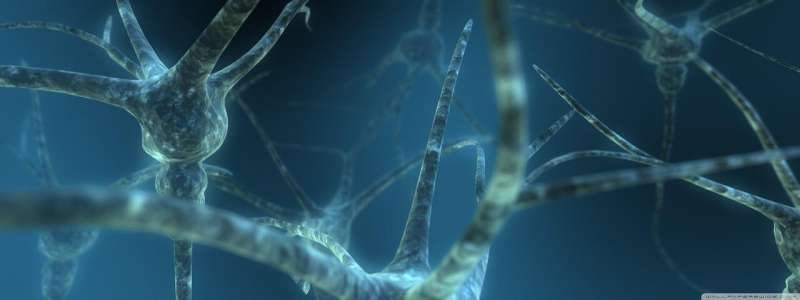
Components of calcium channels play a decisive role in synapse formation. This is the surprising conclusionof a study comprising more than a decade of research, owing to the involved experimental challenges. The findings were published in PNAS today. The laboratory within the Mental Health & Neuroscience research program at the Karl Landsteiner University of Health Sciences in Krems, Austria (KL Krems) focuses on neuronal functions of regulatory proteins of so-called voltage-gated calcium channels. Over the recent years these proteins—named α2δ – have emerged as important regulators of synaptic transmission between nerve cells. The present finding of these proteins critically regulating the formation of excitatory synapses in the central nervous system, however, came as a surprise.
Nerves are electrified. A lively picture, but given that a flow of ions actually transmits nerve signals not far from reality. The transmission of signals between nerve cells depends on voltage-gated calcium channels. These channels trigger the release of neurotransmitters at synapses (the connections between neurons), and hence modulate higher brain functions such as learning and memory. α2δ proteins are regulatory components of calcium channels and also serve as targets for gabapentin, a drug used to treat epilepsy and neuropathic pain. However, for specific reasons, unraveling the synaptic functions of these proteins has proven extremely difficult. In aproject comprising ten years of research, a team headed by Prof. Gerald Obermair, head of the division physiology at KL Krems has now identified within the Mental Health & Neuroscience research program a surprising and fundamental novel function of this protein.
Knockout in three steps
The state-of-the-art method for characterizing proteins involves “knocking out” the protein’s gene and then analyzing the consequence on various cell functions. However, three different types of α2δ proteins exist in the brain—and each of these three isoforms can, to some extent, compensate the loss of the others. This fact caused the major experimental challenge, as Prof. Obermair explains: “Each isoform is encoded by its own gene. If we knock out one of them, the other proteins step in as replacements, at least to some degree. So, we had tocome up with an experimental model in which none of the three genes are expressed.” This turned out to be a huge experimental challenge, witha success rate of less than 5%. After overcoming this hurdle, though, the team made unique novel discoveries.
“Our findings allow a surprising conclusion: presynaptic α2δ proteins are absolutely essential for the formation of excitatory synapses,” says Prof. Obermair the outcome of years of research which was initiated at the Medical University of Innsbruck, Austria. “This new role of α2δ proteins goes way beyond the regulation of cellular calcium currents.” Recent publications by Obermair’s team and also by others already proposed a “trans-synaptic” function ofα2δ proteins, however, the novel fundamental role was not immediately obvious. But, in the course of many experiments, partly in collaboration with other international laboratories, as for example the research group headed by Prof. Ryuichi Shigemoto at the Institute of Science and Technology Austria, a conclusive picture gradually emerged.
Specific roles of α2δ proteins
The experiments revealed that without α2δ proteins synapses of cultured nerve cells are unable to release neurotransmitters; moreover, they also lack the calcium channels as well as critical components of synaptic neurotransmitter vesicles. This causes an insufficient differentiation of nerve endings and subsequently a reduction of glutamate receptors on postsynaptic nerve cells. Together this suggests that α2δ proteins organize the bridging between the two sides of synapses. Finally, genetic cell therapy was employed to demonstrate that each one of the three types of α2δ proteins found in the brain was able to restore synapse formation and synaptic function, underlining the central position of these proteins. Taken together, the experiments revealed the critical role of α2δ proteins in organizing excitatory synapses.
Source: Read Full Article
